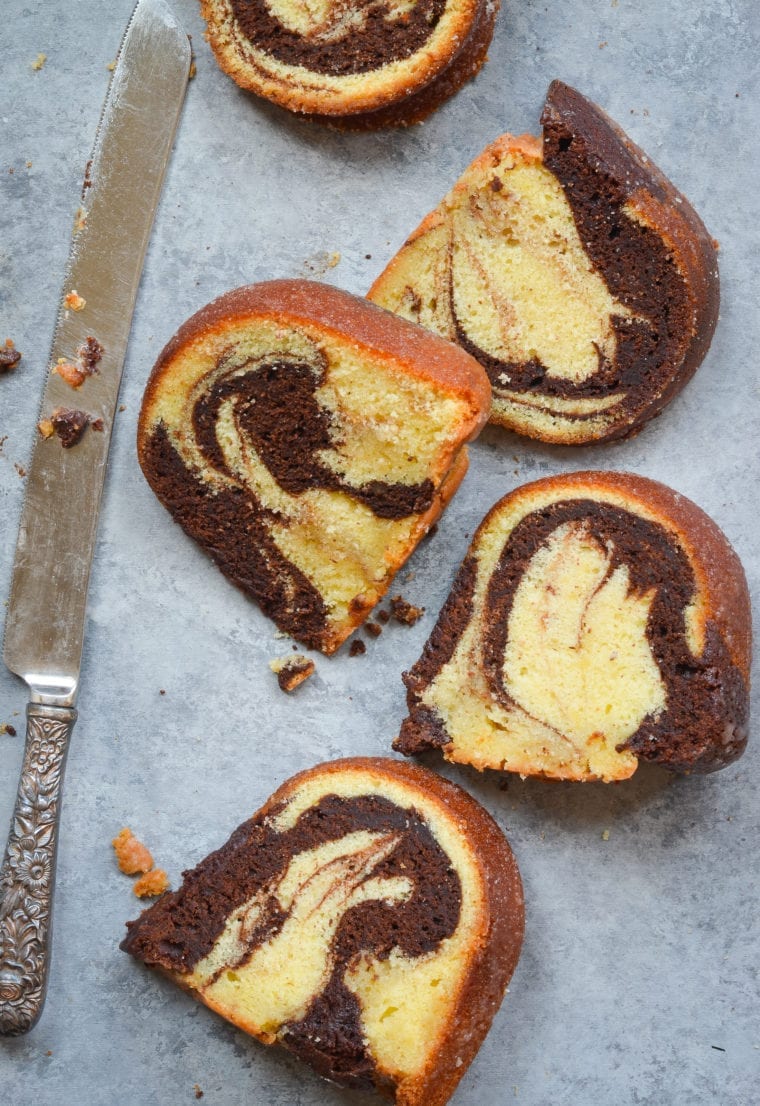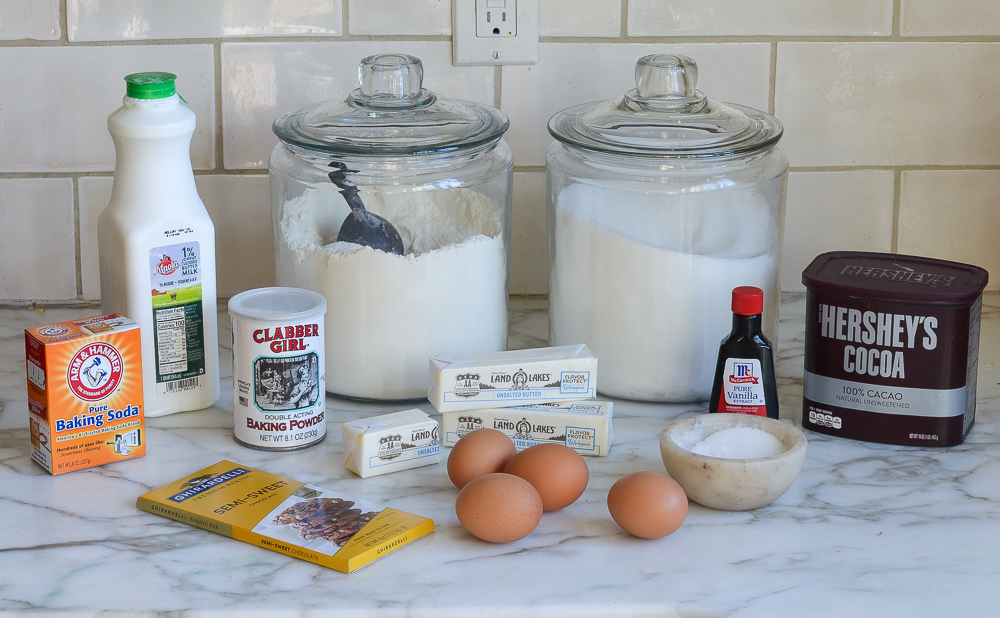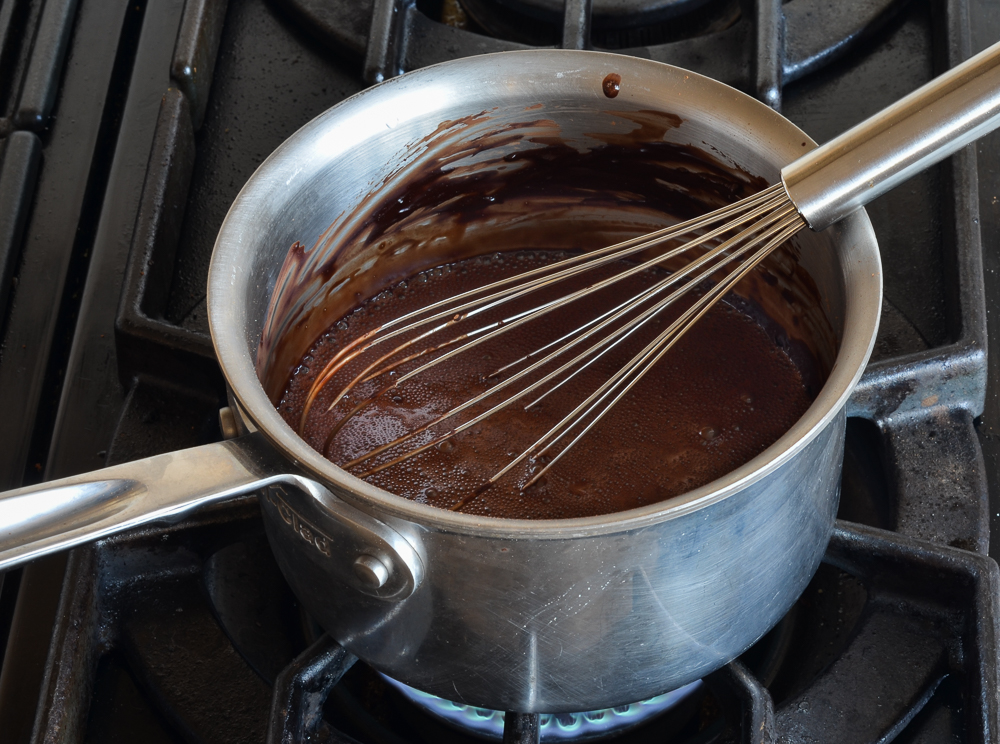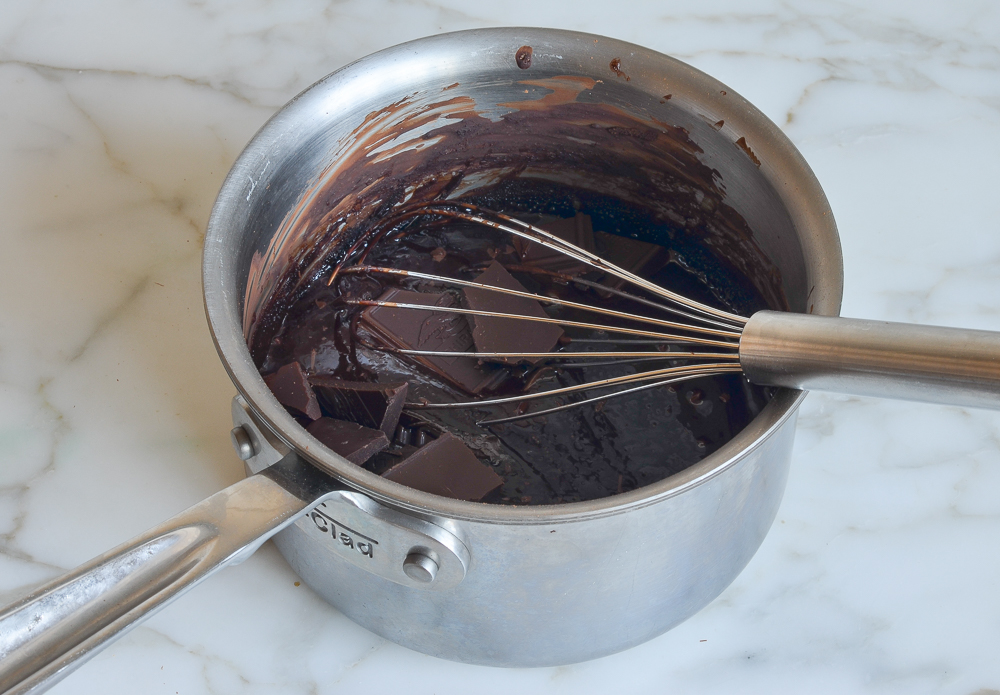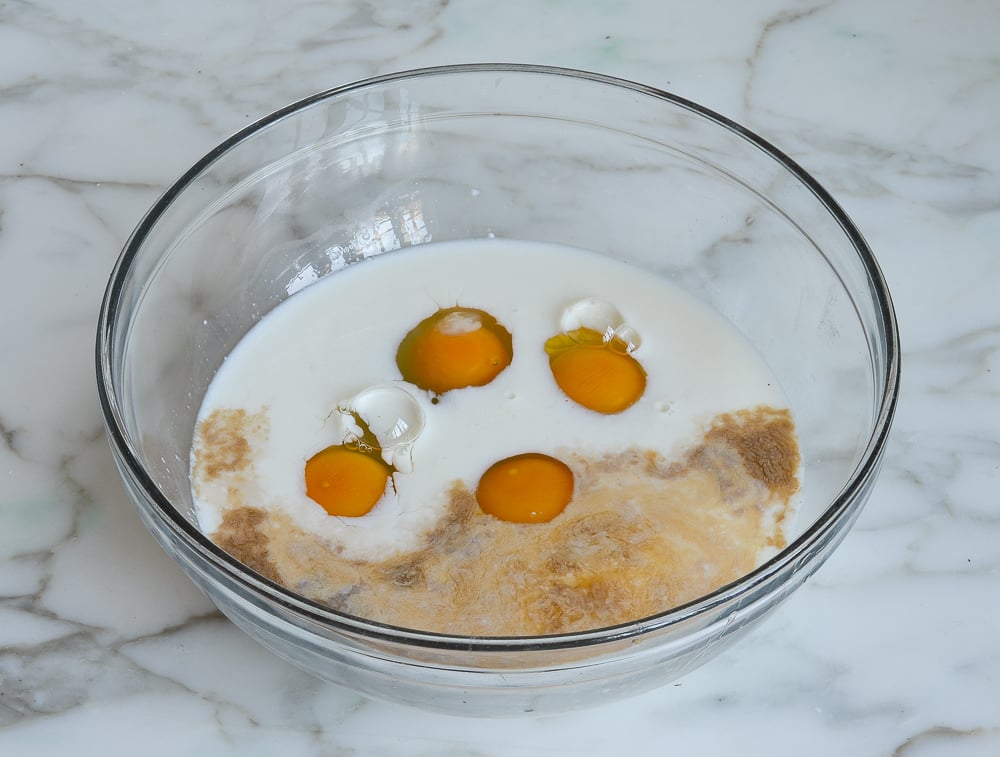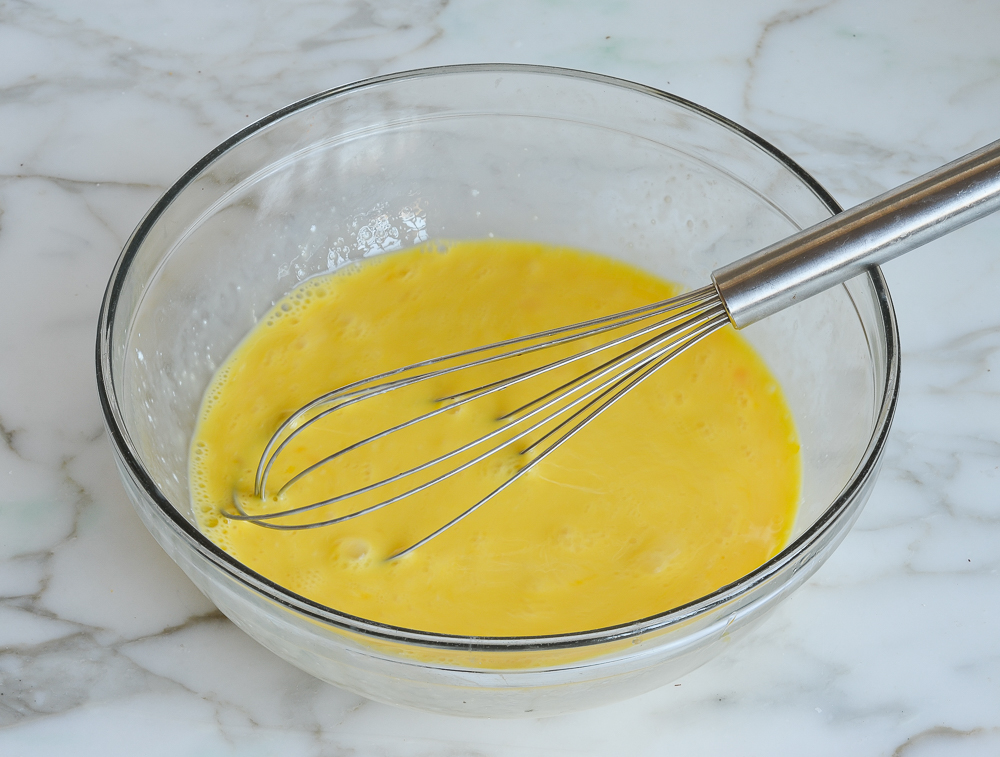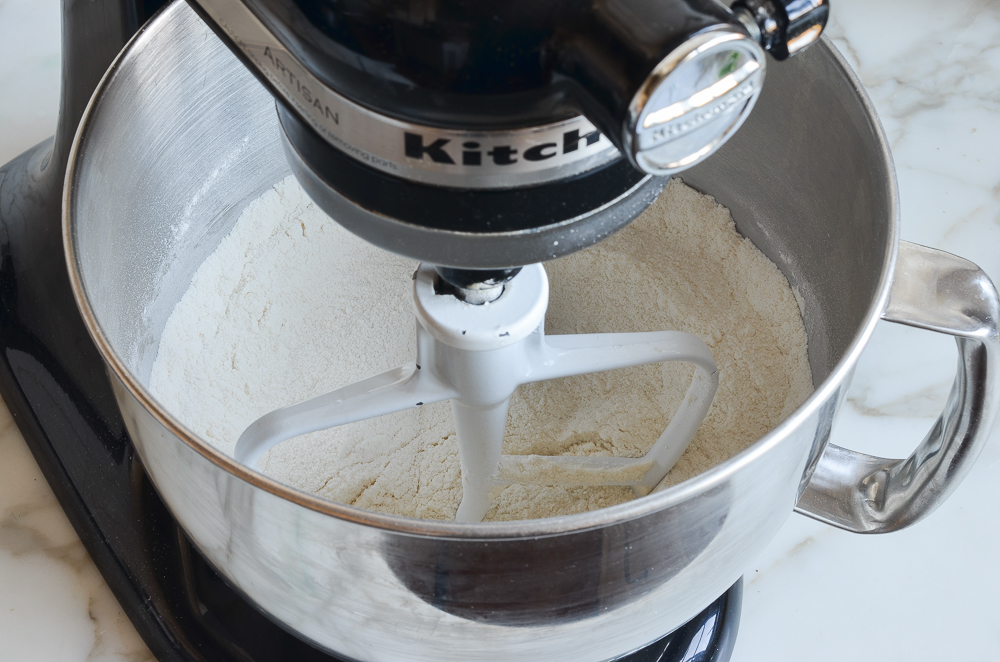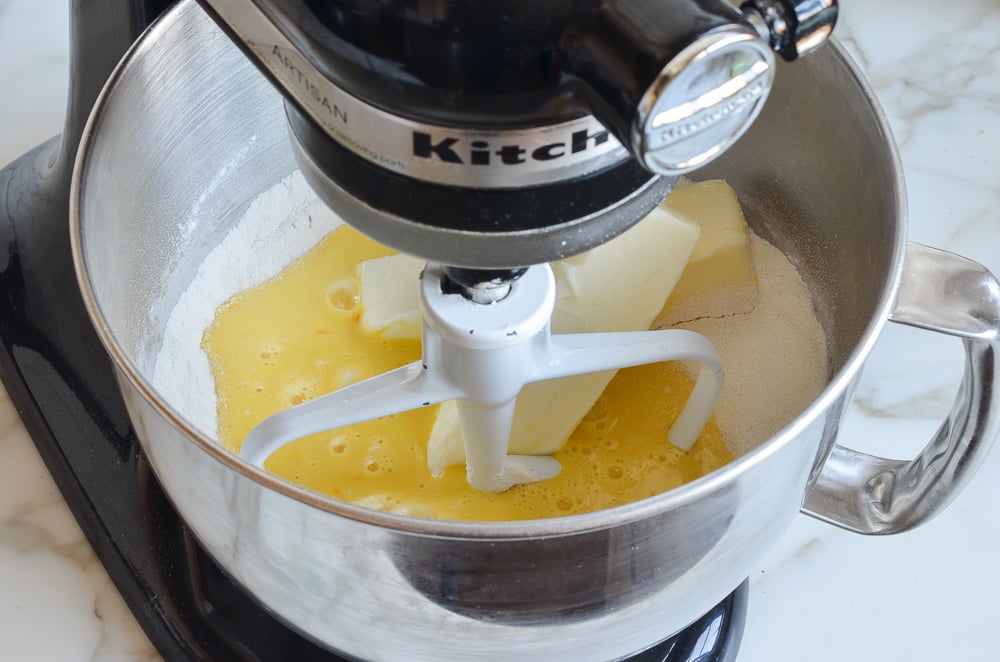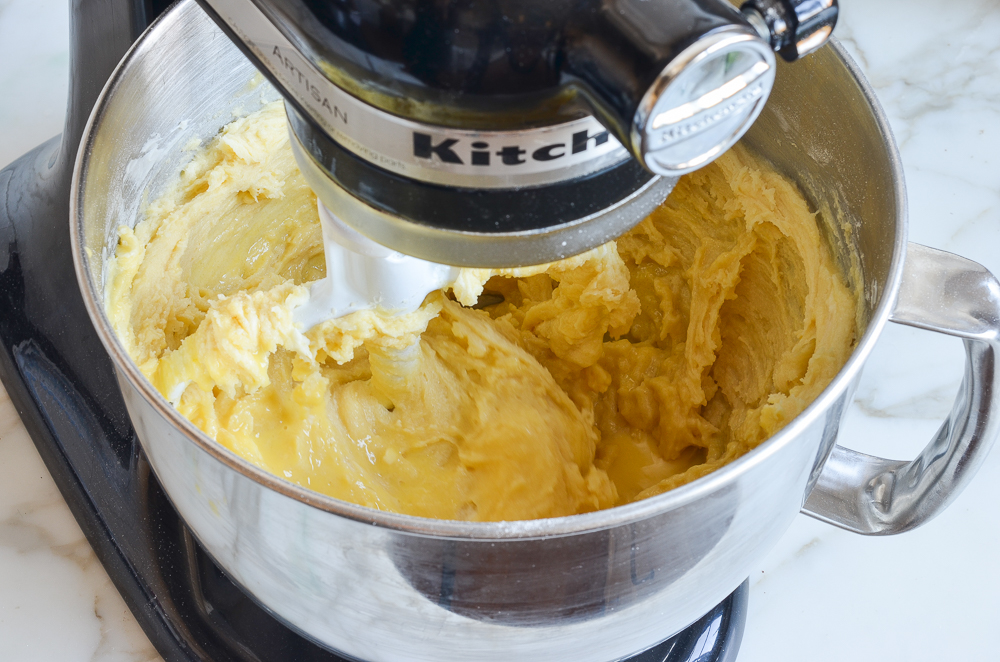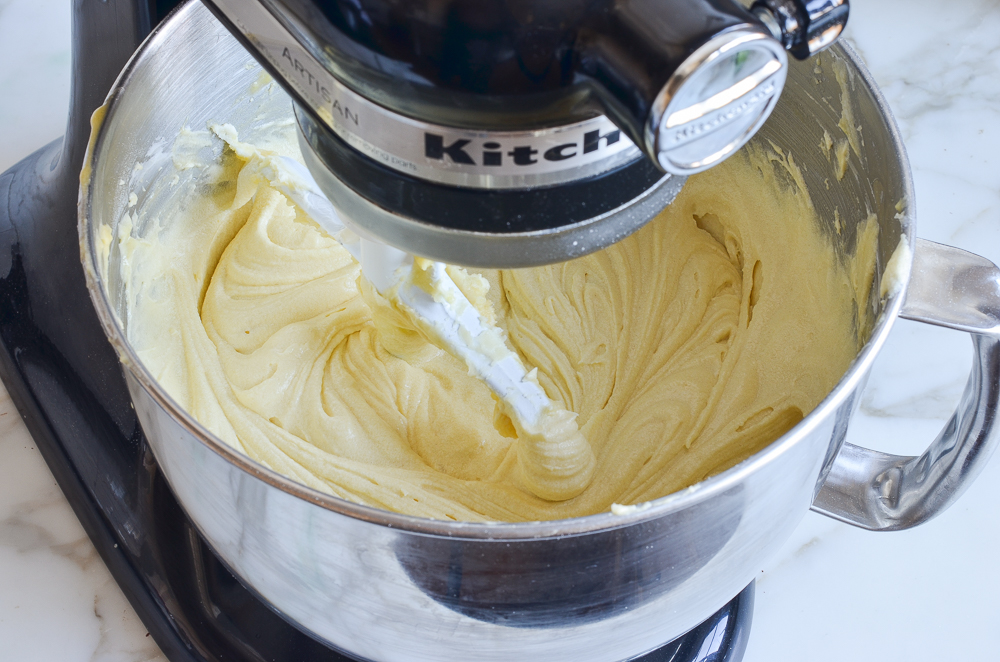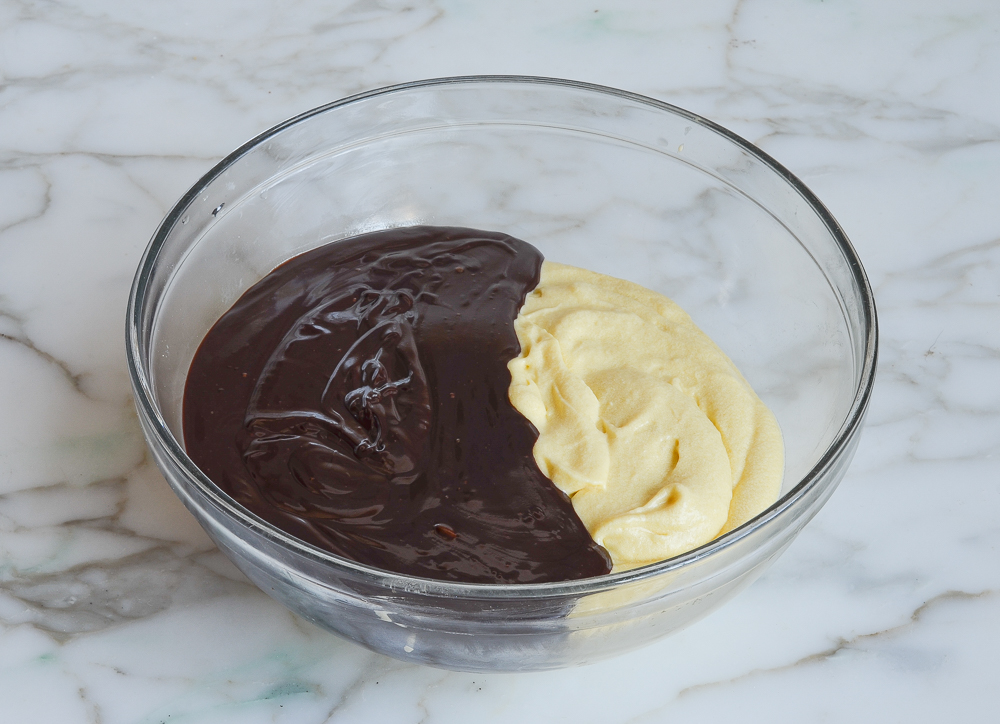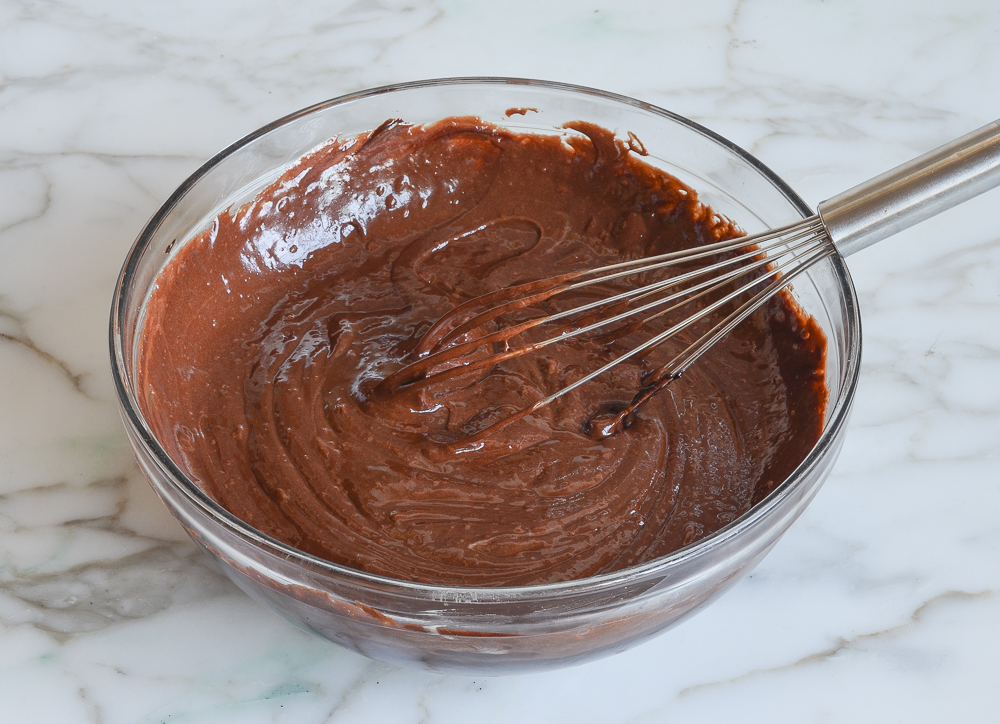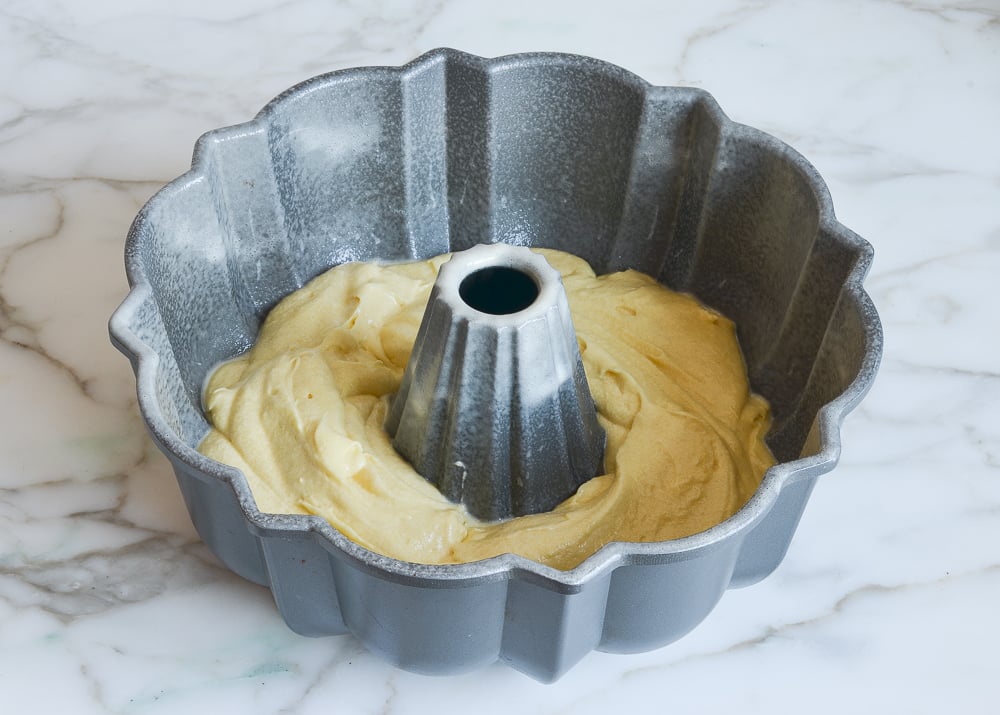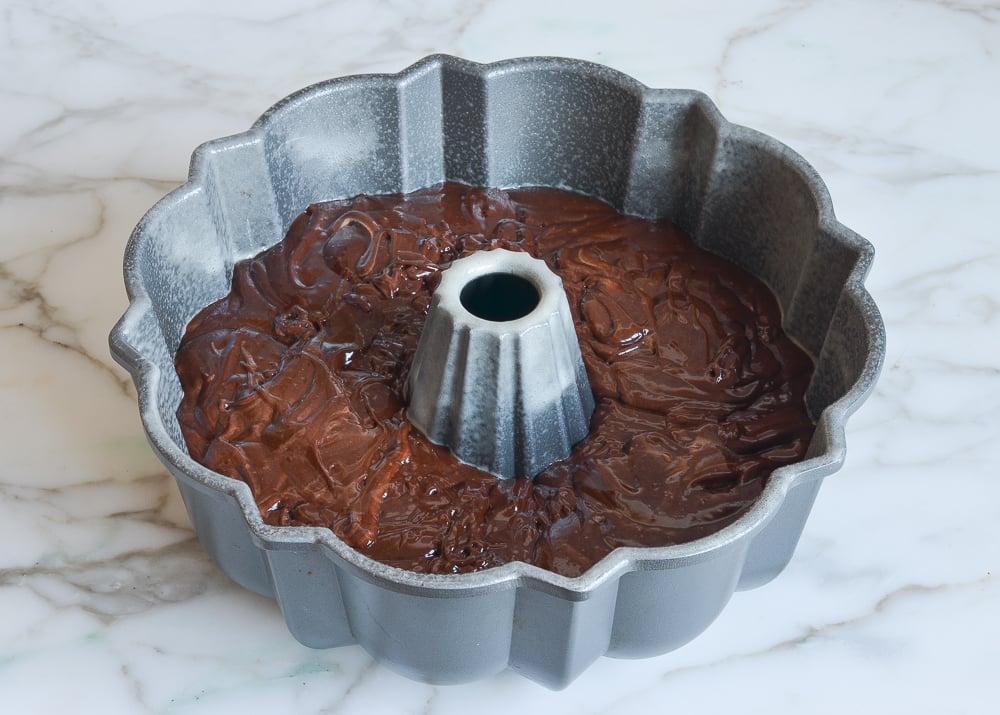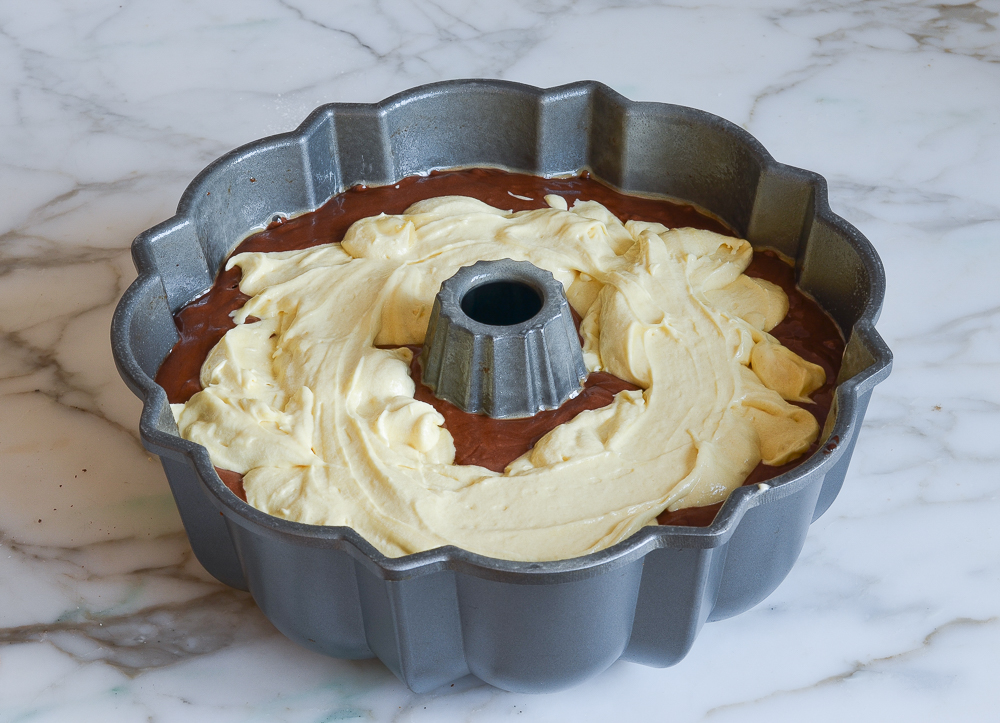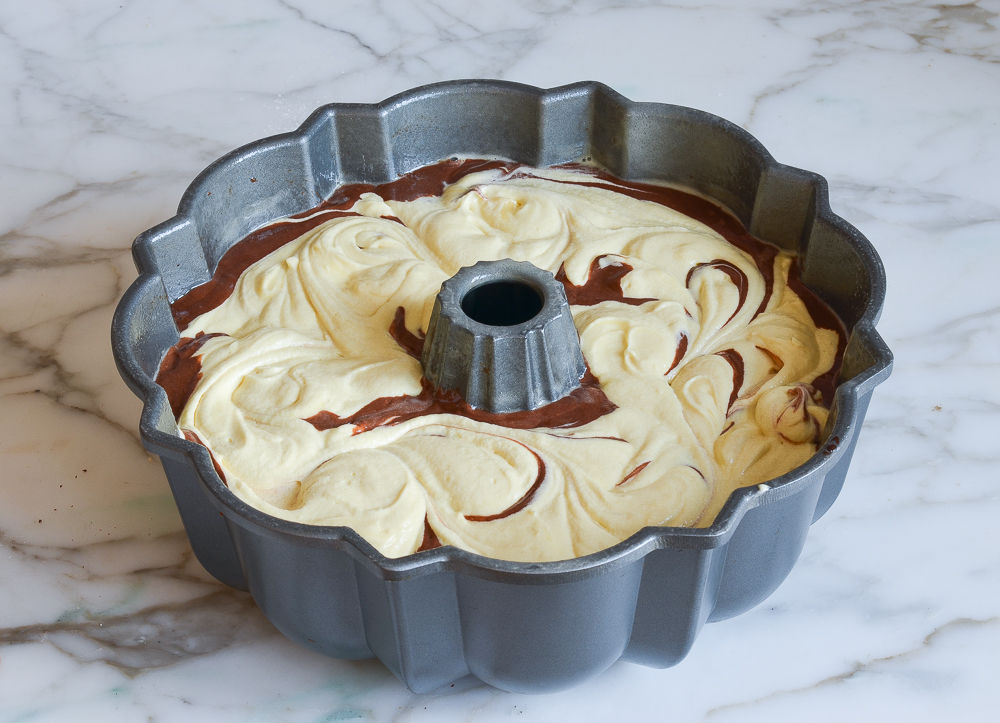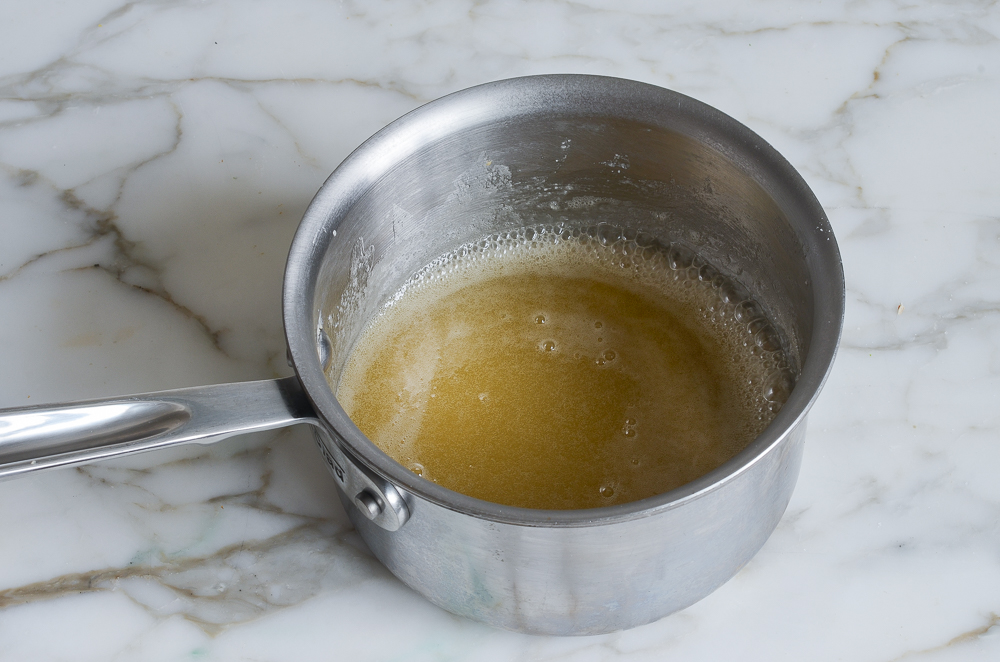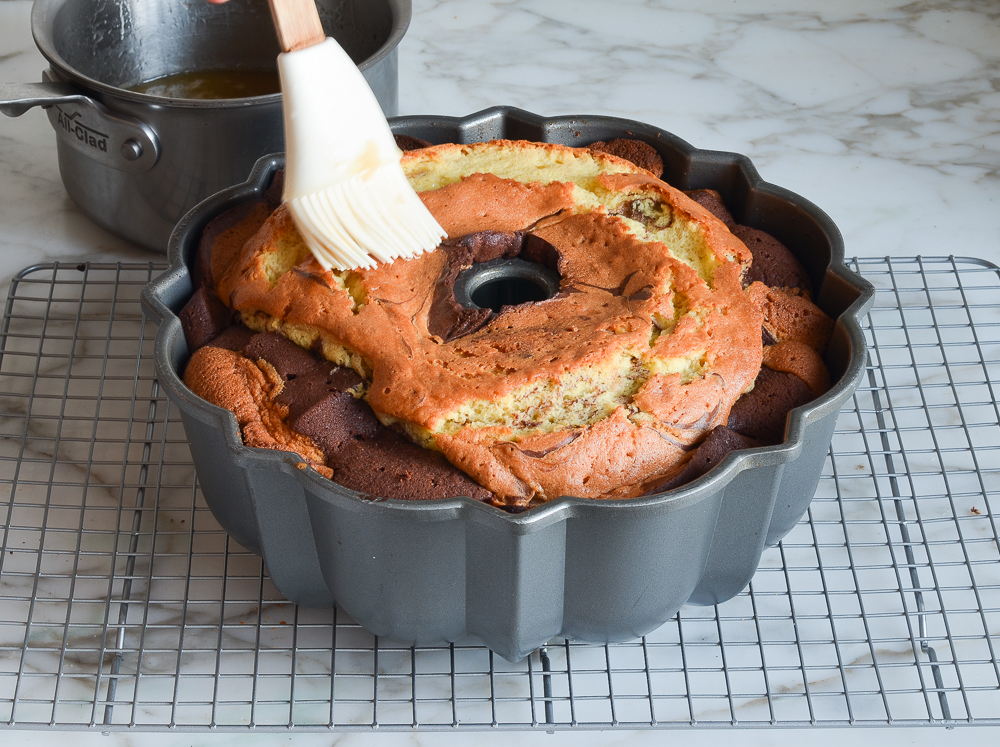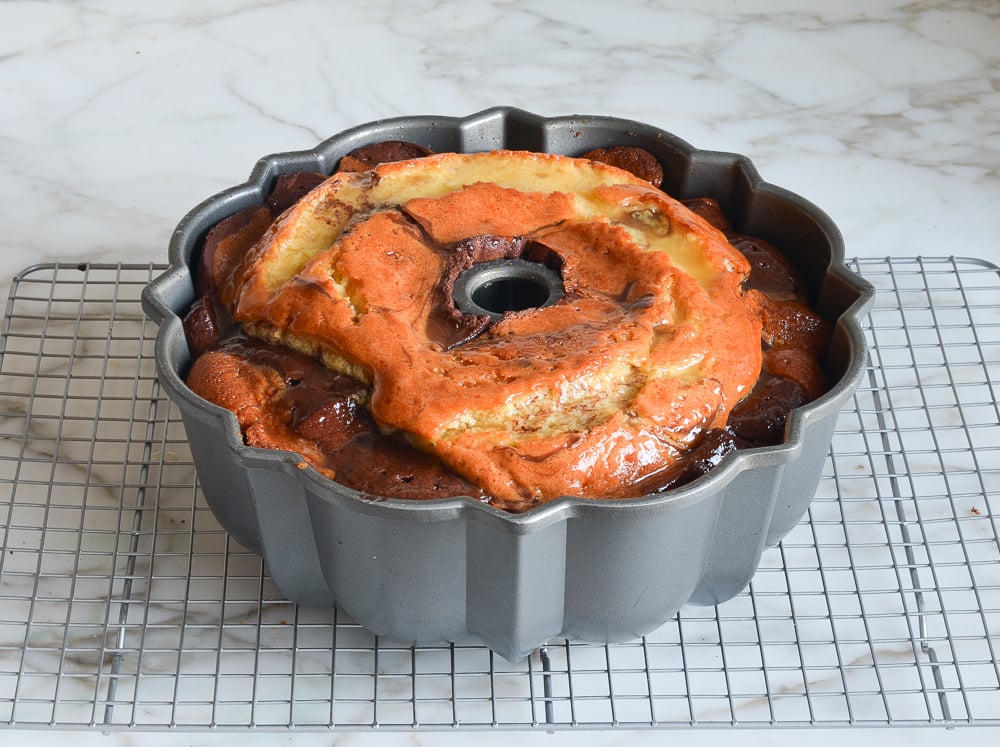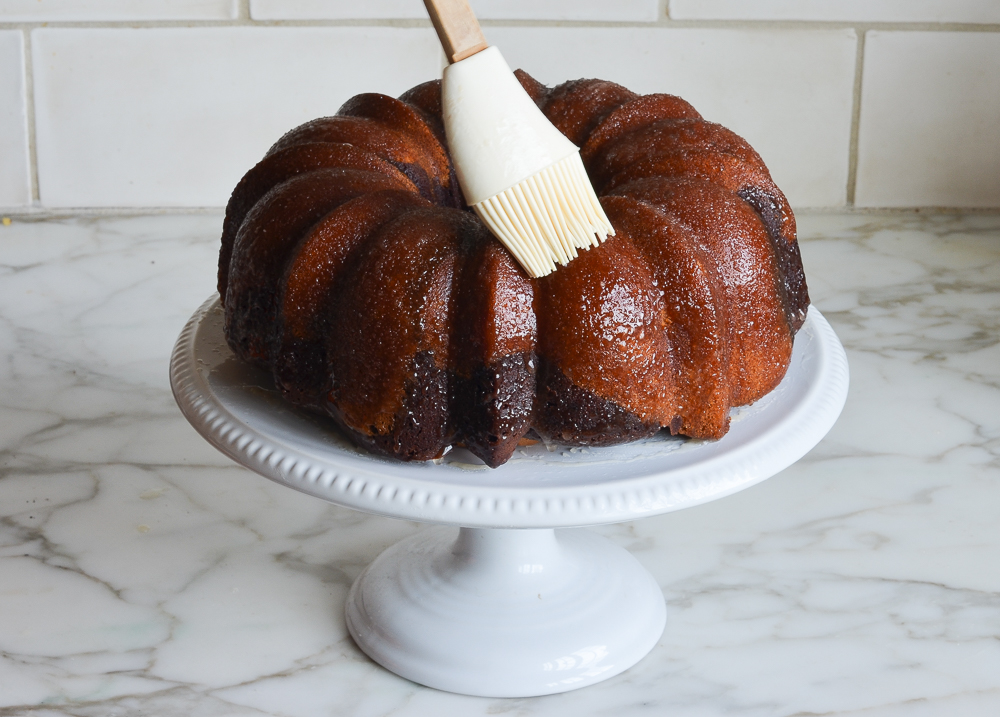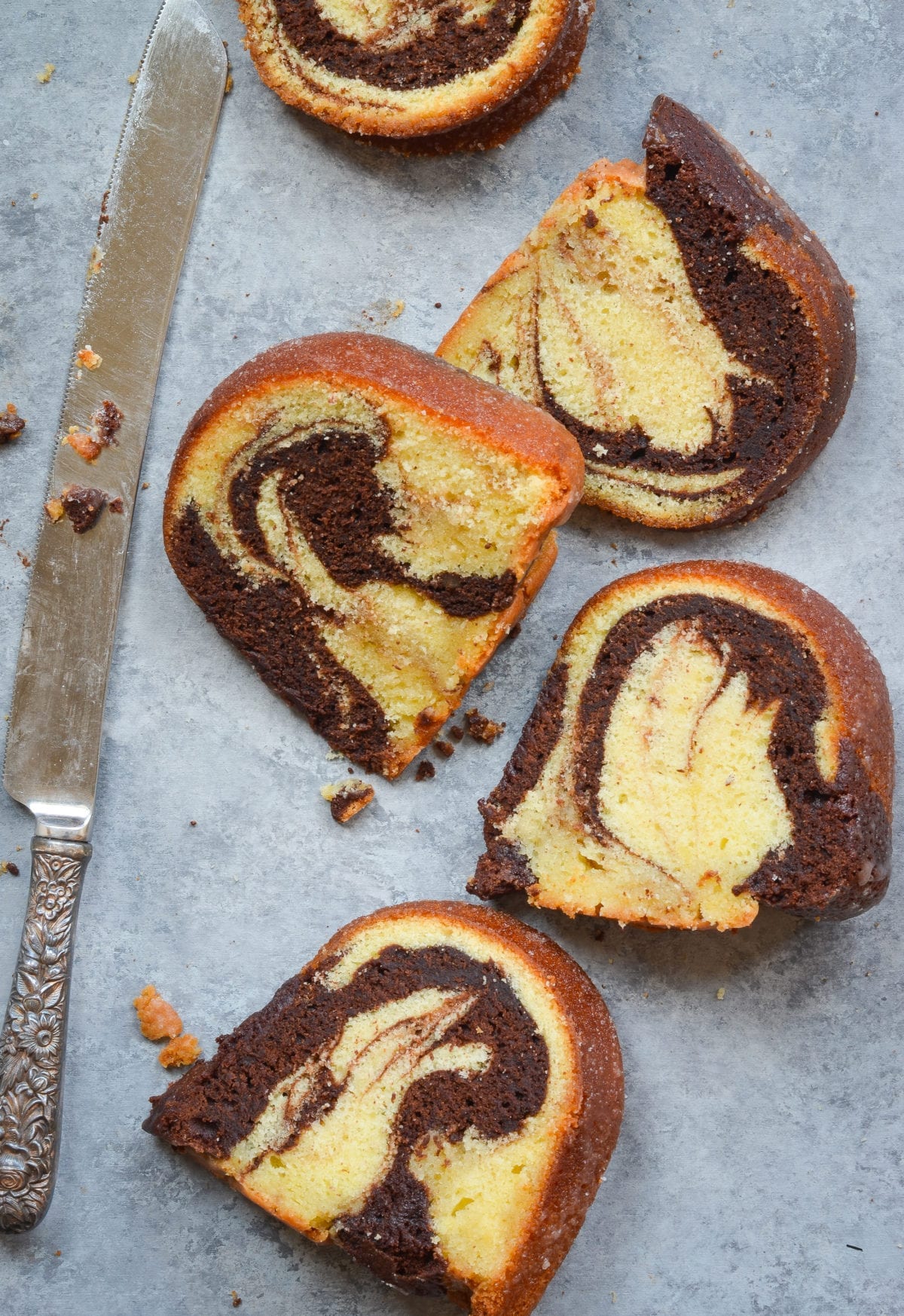This marble cake may look fancy, but its flavor is pure old-fashioned goodness.
With swirls of tender vanilla and fudgy chocolate cake, this marble cake looks fancy but tastes like pure old-fashioned goodness, and it appeals to kids and grown-ups alike. It’s essentially a marbled version of this award-winning Kentucky Butter Cake. Surprisingly, you don’t need two completely different batters to make marble cake. You simply take a third of the vanilla batter and mix it with melted chocolate and cocoa powder and voilà — that’s your chocolate batter! Be careful not to over-marble the batters or the flavors will get muddled; a few swirls around the pan with a knife will do the trick.
What You’ll Need To Make Marble Cake
Most recipes for marble cake call solely for cocoa powder for the chocolate portion of the cake. I like to add real chocolate as well for a more intense, fudgy flavor; this makes the chocolate swirl portion of the cake taste almost like a brownie. If you’d rather not buy a whole carton of buttermilk for this recipe, it’s easy to make your own. Simply add 1 tablespoon of lemon juice or white vinegar to a liquid measuring cup. Then add regular milk to the 1-cup line and let sit for 10 to 15 minutes, or until slightly curdled and thickened.
The Method
This butter cake is a “high-ratio” cake, which means that the weight of the sugar equals or exceeds the weight of the flour. Instead of the more common “creaming” method (where the butter and sugar are beaten together before the eggs, flour, and liquid are added), high-ratio cakes can be made using the “high-ratio” or “quick-mix” method. This involves mixing all the dry ingredients with the butter and some of the liquid first, then adding the remaining liquid ingredients. This method is not only faster and easier than the traditional creaming method, but it also yields incredibly tender and fine-textured cakes.(Other high-ratio cakes on the site include pound cake, yellow cake, and rum cake.)
How To Make Marble Cake
In a small saucepan, combine the cocoa powder, 1/2 cup of the sugar, and the water. Bring to a simmer over high heat, whisking until smooth.
Off the heat, immediately add the chocolate; whisk until the chocolate is melted and the mixture is smooth. Set aside.
In a medium bowl, combine the buttermilk, eggs, and vanilla.
Whisk and set aside. (Note that the mixture will start to look curdled as it sits; that’s okay.)
In the bowl of an electric mixer fitted with the paddle attachment or beaters, combine the flour, baking powder, baking soda, and remaining 2 cups of sugar. Beat on low speed for 30 seconds to combine.
Add the softened butter and half of the buttermilk mixture and mix on low speed until moistened but still a little crumbly, about 1 minute.
With the mixer running on low, gradually add the remaining buttermilk mixture until incorporated. Increase the speed to medium and mix for three minutes, stopping once to scrape down the sides and bottom of the bowl with a rubber spatula. The batter should look pale and creamy. Scrape down the sides and bottom of the bowl again, making sure the batter is evenly mixed. Transfer about 2-1/2 cups of the batter to a medium bowl and add the chocolate mixture.
Whisk until smooth — that’s your chocolate batter. Spoon half of the remaining vanilla batter into a greased Bundt pan. Pour the chocolate batter over top. Finish by spooning the remaining vanilla batter over the chocolate (don’t worry about covering the chocolate layer completely). Using a butter knife, swirl the batters together with a zig-zag motion, going three times around the pan. It may not look like the batters are swirled; that’s okay. It’s important not to overswirl.
Bake for 60 to 70 minutes, or until a cake tester comes out clean. While the cake bakes, make the glaze. In a small saucepan, combine the butter, sugar, water, and vanilla. Bring to a boil, then reduce the heat and simmer until the sugar is dissolved, about 1 minute. Set the baked cake on a cooling rack. Using a skewer or toothpick, poke about 40 holes in the bottom of the still-hot cake, going about 3/4 of the way down. Spoon or brush half of the glaze evenly over the bottom of the cake. If the glaze starts to pool on the surface, poke more holes to help it absorb. Leave the cake on the rack to cool for 30 minutes.
Invert the cake onto a serving platter. Brush the remaining glaze evenly over the top and sides of the cake, letting it soak in as you go. (Go slowly so that the glaze gets absorbed.)
Let the cake sit for at least two hours before serving. Cut with a serrated knife.
Kentucky Butter Cake Sour Cream Coffee Cake with Cinnamon Walnut Swirl Sour Cream Chocolate Chip Coffee Cake Lemon Pound Cake German Chocolate Cake Chocolate Bundt Cake
Per serving (16 servings) Calories: 443 Fat: 19 g Saturated fat: 12 g Carbohydrates: 66 g Sugar: 45 g Fiber: 2 g Protein: 5 g Sodium: 223 mg Cholesterol: 87 mg
Rate the recipe: 5 stars means you loved it, 1 star means you really disliked it Your name * Your email (will not be published) * Save my name, email, and website in this browser for the next time I comment.
Δ
